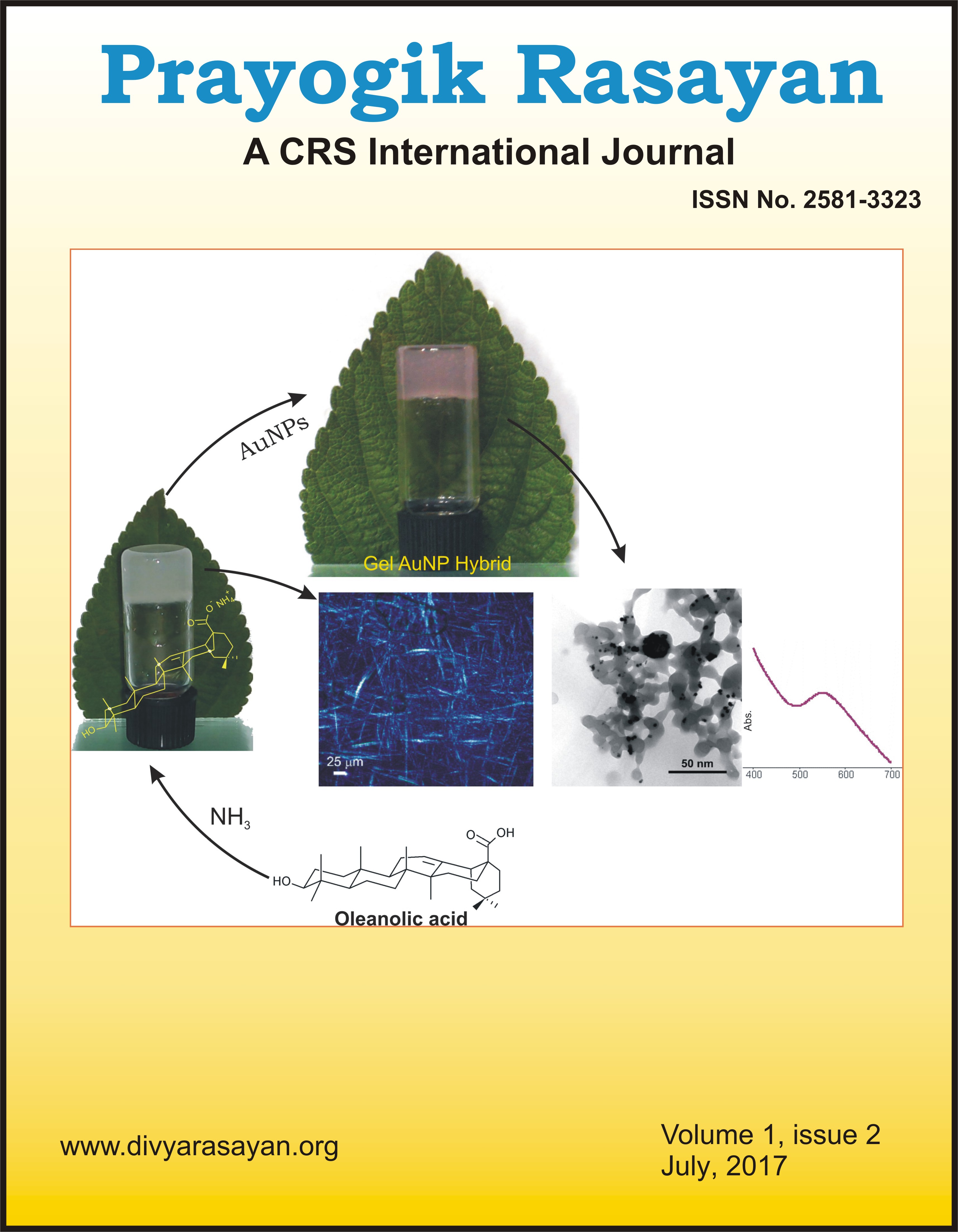


Oleanolic acid was extracted from the root of Lantana camara. A solution of oleanolic acid in tetrahydrofuran transformed into a gel instantly at room temperature on treatment with aqueous ammonia.

Prayogic Rasayan 2017, 1, 43-47
DOI: https://www.doi.org/10.53023/p.rasayan-201704283
Abstract

Prayogic Rasayan 2017, 1, 48-53
DOI: https://www.doi.org/10.53023/p.rasayan-201704284
Abstract

Prayogic Rasayan 2017, 1, 54-57
DOI: https://www.doi.org/10.53023/p.rasayan-20170906
Abstract
A clerodane type diterpene, nasimalun A was isolated from a dichloromethane extract of the leaves of Croton oblongifolius Roxb. Nasimalun A showed moderate cytotoxicity toward MOLT- 3 cell line with IC50 value of 26.44 µg/mL. Furthermore, nasimalun A showed minimum inhibitory concentration (MIC) of 50, 12.5, and100 µg/mL for Bacillus cereus and both Staphylococcus aureus, and Staphylococcus epidermidis respectively.

Prayogic Rasayan 2017, 1, 58-60
DOI: https://www.doi.org/10.53023/p.rasayan-20170728
Abstract

Prayogic Rasayan 2017, 1, 61-65
DOI: https://www.doi.org/10.53023/p.rasayan-20170512
Abstract
The antioxidant activity of the endosperm extract of Borassus flabellifer (commonly known as Taal) has been studied against a long lived 2,2-diphenylpicrylhydrazyl (DPPH) radical at room temperature. The phytochemicals present in the endosperm extract have been utilized for the synthesis of stable gold nanoparticles at room temperature under very mild conditions. The synthesized gold nanoparticles were characterized by Surface Plasmon Resonance spectroscopy, High resolution transmission electron microscopy, X-Ray diffraction and FTIR studies and a mechanism for the synthesis of stabilized gold nanoparticles has been proposed.